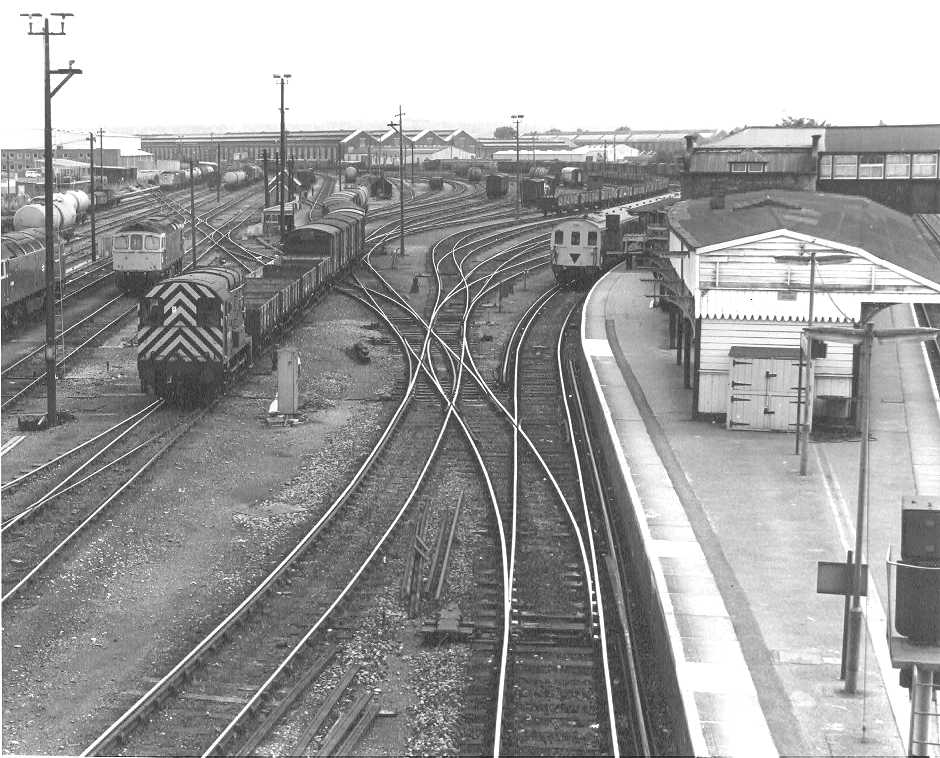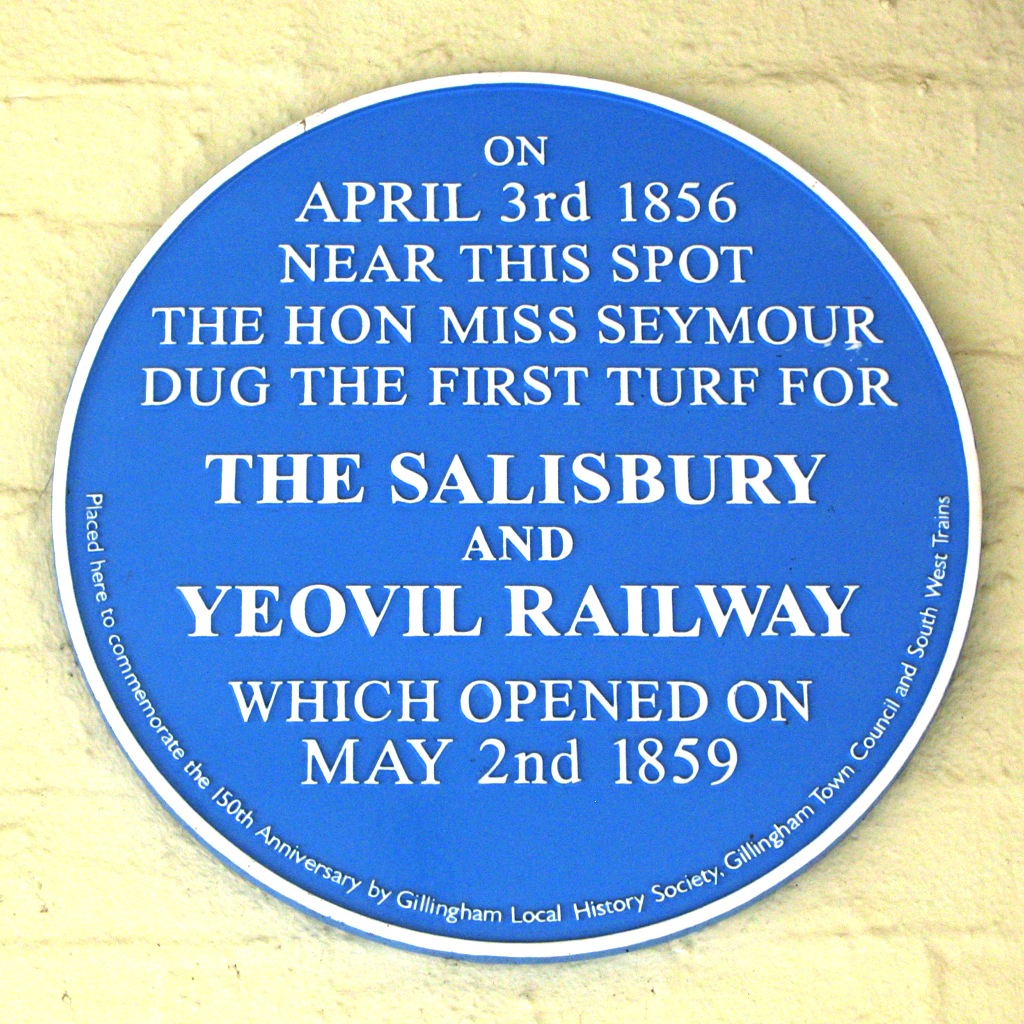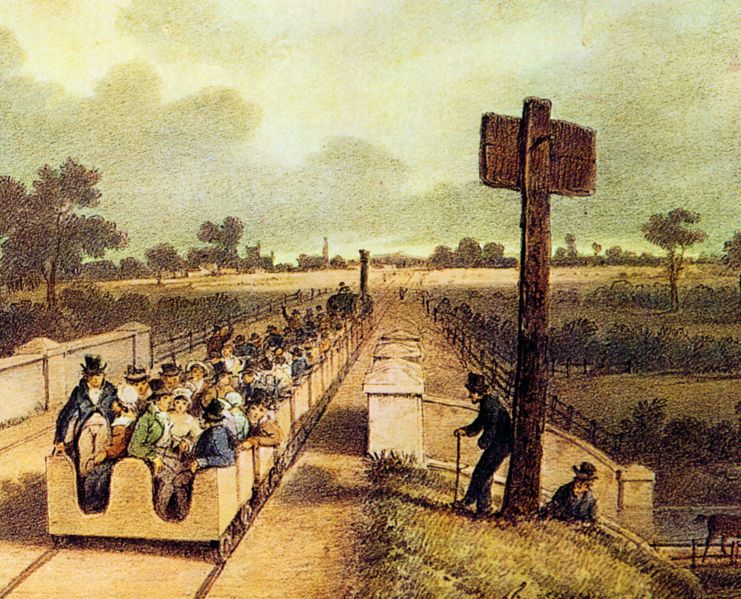|
Eastleigh To Salisbury Line
The Eastleigh to Salisbury line is the railway line from Eastleigh through Romsey to Salisbury in Hampshire, England. It was constructed by the London and South Western Railway in 1857 from Bishopstoke; the station changed its name to Eastleigh in 1889. At Salisbury the line ran to Milford station on the south-eastern margin of the city, but in 1859 and extension to the present-day Salisbury station was built, and the lines from Andover, Hampshire, Andover through Salisbury to Yeovil were connected. In 1865 the Sprat and Winkle Line, Andover and Redbridge Railway was opened, giving a direct connection from Southampton to Romsey, and in 1889 the missing link from Netley to Romsey was ready. In time this became the dominant route to Southampton, and the Eastleigh to Romsey section was greatly reduced in importance. The route to Salisbury carried through trains from Bristol and South Wales, and became an important artery from South Wales for bunker coal for coal-fuelled shipping at S ... [...More Info...] [...Related Items...] OR: [Wikipedia] [Google] [Baidu] |
Eastleigh
Eastleigh is a town in Hampshire, England, between Southampton and Winchester. It is the largest town and the administrative seat of the Borough of Eastleigh, with a population of 24,011 at the 2011 census. The town lies on the River Itchen, one of England's premier chalk streams for fly fishing, and a designated site of Special Scientific Interest. The area was originally villages until the 19th century, when Eastleigh was developed as a railway town by the London and South-Western Railway. History The modern town of Eastleigh lies on the old Roman road, built in A.D.79 between Winchester ''( Venta Belgarum)'' and Bitterne ''( Clausentum)''. Nicola Gosling: 1986, Page 4 Roman remains discovered in the Eastleigh area, including a Roman lead coffin excavated in 1908, indicate that a settlement probably existed here in Roman times. A Saxon village called 'East Leah' has been recorded to have existed since 932 AD. ('Leah' is an ancient Anglo-Saxon word meaning 'a cl ... [...More Info...] [...Related Items...] OR: [Wikipedia] [Google] [Baidu] |
Bristol
Bristol () is a city, ceremonial county and unitary authority in England. Situated on the River Avon, it is bordered by the ceremonial counties of Gloucestershire to the north and Somerset to the south. Bristol is the most populous city in South West England. The wider Bristol Built-up Area is the eleventh most populous urban area in the United Kingdom. Iron Age hillforts and Roman villas were built near the confluence of the rivers Frome and Avon. Around the beginning of the 11th century, the settlement was known as (Old English: 'the place at the bridge'). Bristol received a royal charter in 1155 and was historically divided between Gloucestershire and Somerset until 1373 when it became a county corporate. From the 13th to the 18th century, Bristol was among the top three English cities, after London, in tax receipts. A major port, Bristol was a starting place for early voyages of exploration to the New World. On a ship out of Bristol in 1497, John Cabot, a ... [...More Info...] [...Related Items...] OR: [Wikipedia] [Google] [Baidu] |
Southampton
Southampton () is a port City status in the United Kingdom, city in the ceremonial county of Hampshire in southern England. It is located approximately south-west of London and west of Portsmouth. The city forms part of the South Hampshire, South Hampshire built-up area, which also covers Portsmouth and the towns of Havant, Waterlooville, Eastleigh, Fareham and Gosport. A major port, and close to the New Forest, it lies at the northernmost point of Southampton Water, at the confluence of the River Test and River Itchen, Hampshire, Itchen, with the River Hamble joining to the south. Southampton is classified as a Medium-Port City . Southampton was the departure point for the and home to 500 of the people who perished on board. The Supermarine Spitfire, Spitfire was built in the city and Southampton has a strong association with the ''Mayflower'', being the departure point before the vessel was forced to return to Plymouth. In the past century, the city was one of Europe's mai ... [...More Info...] [...Related Items...] OR: [Wikipedia] [Google] [Baidu] |
Nursling
Nursling is a village in Hampshire, England, situated in the parish of Nursling and Rownhams, about north-west of the city of Southampton. Formerly called Nhutscelle (in an 8th-century life of Saint Boniface), then Nutsall, Nutshalling or Nutshullyng until the mid-19th century, it has now been absorbed into the suburbs of Southampton, although it is not officially part of the city (remaining part of the Test Valley borough). History At ''Onna'' (Nursling) Romans erected a bridge (probably a wooden one as no trace of stone abutments remains) across the River Test, below which it widens into its estuary, and there are traces of the Roman road from Nursling to Stoney Cross. At Nhutscelle a Benedictine monastery was established in 686, the earliest Benedictine establishment in Wessex according to Bede. It became a major seat of learning, and at the end of the 7th century, Winfrith (subsequently Saint Boniface) studied here under the abbot Winberht, producing the first Latin gr ... [...More Info...] [...Related Items...] OR: [Wikipedia] [Google] [Baidu] |
Redbridge, Southampton
Redbridge is a ward with a population of 14,432, to the west of the city centre of Southampton, England. The settlement is positioned at the mouth of the River Test and is the southern terminus of the former Andover Canal and Sprat and Winkle railway line, and the modern M271 motorway. Because of its strategic position, the settlement became a substantial trading post and shipbuilding centre, with many merchant and Royal Navy vessels being constructed in Redbridge in the 18th and 19th centuries. Today, the area is mainly residential and industrial, with a large council estate and a tower block situated within the ward and Southampton Docks close by. The A35 road crosses the River Test at Redbridge, as does the South West Main Line railway. It has a small railway station. Etymology Redbridge has been known by several names, all derived from its position as a crossing point over the River Test – originally as a ford and later with the bridge that gives the area its current ... [...More Info...] [...Related Items...] OR: [Wikipedia] [Google] [Baidu] |
Dunbridge 1895
Dunbridge is a hamlet in the Test Valley district of Hampshire, England. It is on the River Dun, a tributary of the River Test. Its nearest town is Romsey, which lies approximately south-east from the village. The Doomsday Book Domesday Book () – the Middle English spelling of "Doomsday Book" – is a manuscript record of the "Great Survey" of much of England and parts of Wales completed in 1086 by order of King William I, known as William the Conqueror. The manusc ... records the manor of Denebrugg being held by one Gilbert de Breteville.'Parishes: Mottisfont', in A History of the County of Hampshire: Volume 4, ed. William Page (London, 1911), pp. 503-510. British History Online http://www.british-history.ac.uk/vch/hants/vol4/pp503-510 ccessed 26 January 2019 The hamlet is served by Mottisfont & Dunbridge railway station on the Wessex Main Line. References Villages in Hampshire Test Valley {{Hampshire-geo-stub ... [...More Info...] [...Related Items...] OR: [Wikipedia] [Google] [Baidu] |
Salisbury And Yeovil Railway
The Salisbury and Yeovil Railway linked Salisbury (Wiltshire), Gillingham (Dorset) and Yeovil (Somerset) in England. Opened in stages in 1859 and 1860, it formed a bridge route between the main London and South Western Railway (LSWR) network and its lines in Devon and Cornwall. Its trains were operated by the LSWR and it was sold to that company in 1878. Apart from a short section in Yeovil it remains open and carries the London Waterloo to Exeter service of South Western Railway. Despite being founded after the "Railway Mania" of the 1840s, it proved to be one of the most profitable railways in the United Kingdom. This was in part due to carrying all LSWR trains to the south west, and in part due to the very good terms agreed for the LSWR to operate the trains. When the company finally sold out to the LSWR in 1878, it held out for a price which saw the shareholders receive more than the face value of their shares. History The LSWR was completed to Southampton in 1840 and a ... [...More Info...] [...Related Items...] OR: [Wikipedia] [Google] [Baidu] |
Board Of Trade
The Board of Trade is a British government body concerned with commerce and industry, currently within the Department for International Trade. Its full title is The Lords of the Committee of the Privy Council appointed for the consideration of all matters relating to Trade and Foreign Plantations, but is commonly known as the Board of Trade, and formerly known as the Lords of Trade and Plantations or Lords of Trade, and it has been a committee of the Privy Council of the United Kingdom. The board has gone through several evolutions, beginning with extensive involvement in colonial matters in the 17th century, to powerful regulatory functions in the Victorian Era and early 20th century. It was virtually dormant in the last third of 20th century. In 2017, it was revitalised as an advisory board headed by the International Trade Secretary who has nominally held the title of President of the Board of Trade, and who at present is the only privy counsellor of the board, the other m ... [...More Info...] [...Related Items...] OR: [Wikipedia] [Google] [Baidu] |
James Broun-Ramsay, 1st Marquess Of Dalhousie
James Andrew Broun-Ramsay, 1st Marquess of Dalhousie (22 April 1812 – 19 December 1860), also known as Lord Dalhousie, styled Lord Ramsay until 1838 and known as The Earl of Dalhousie between 1838 and 1849, was a Scottish statesman and colonial administrator in British India. He served as Governor-General of India from 1848 to 1856. He established the foundations of the modern educational system in India by adding mass education in addition to elite higher education. He introduced passenger trains to the railways, the electric telegraph and uniform postage, which he described as the "three great engines of social improvement". He also founded the Public Works Department in India To his supporters he stands out as the far-sighted Governor-General who consolidated East India Company rule in India, laid the foundations of its later administration, and by his sound policy enabled his successors to stem the tide of rebellion. His period of rule in India directly preceded ... [...More Info...] [...Related Items...] OR: [Wikipedia] [Google] [Baidu] |
Railway Mania
Railway Mania was an instance of a stock market bubble in the United Kingdom of Great Britain and Ireland in the 1840s. It followed a common pattern: as the price of railway shares increased, speculators invested more money, which further increased the price of railway shares, until the share price collapsed. The mania reached its zenith in 1846, when 263 Acts of Parliament for setting up new railway companies were passed, with the proposed routes totalling . About a third of the railways authorised were never built—the companies either collapsed due to poor financial planning, were bought out by larger competitors before they could build their line, or turned out to be fraudulent enterprises to channel investors' money into other businesses. Causes The world's first recognizably modern inter-city railway, the Liverpool and Manchester Railway (the L&M), opened its railway in 1830 and proved to be successful for transporting both passengers and freight. In the late 1830s an ... [...More Info...] [...Related Items...] OR: [Wikipedia] [Google] [Baidu] |
Broad-gauge Railway
A broad-gauge railway is a railway with a track gauge (the distance between the rails) broader than the used by standard-gauge railways. Broad gauge of , commonly known as Russian gauge, is the dominant track gauge in former Soviet Union ( CIS states, Baltic states, Georgia and Ukraine), Mongolia and Finland. Broad gauge of , commonly known as Irish Gauge, is the dominant track gauge in Ireland, and the Australian states of Victoria and Adelaide. Broad gauge of , commonly known as Iberian gauge, is the dominant track gauge in Spain and Portugal. Broad gauge of , commonly known as Indian gauge, is the dominant track gauge in India, Pakistan, Bangladesh, Sri Lanka, Argentina, Chile, and on BART (Bay Area Rapid Transit) in the San Francisco Bay Area. This is the widest gauge in common use anywhere in the world. It is possible for trains on both Iberian gauge and Indian gauge to travel on each other's tracks with no modifications in the vast majority of cases. History In ... [...More Info...] [...Related Items...] OR: [Wikipedia] [Google] [Baidu] |


.jpg)





